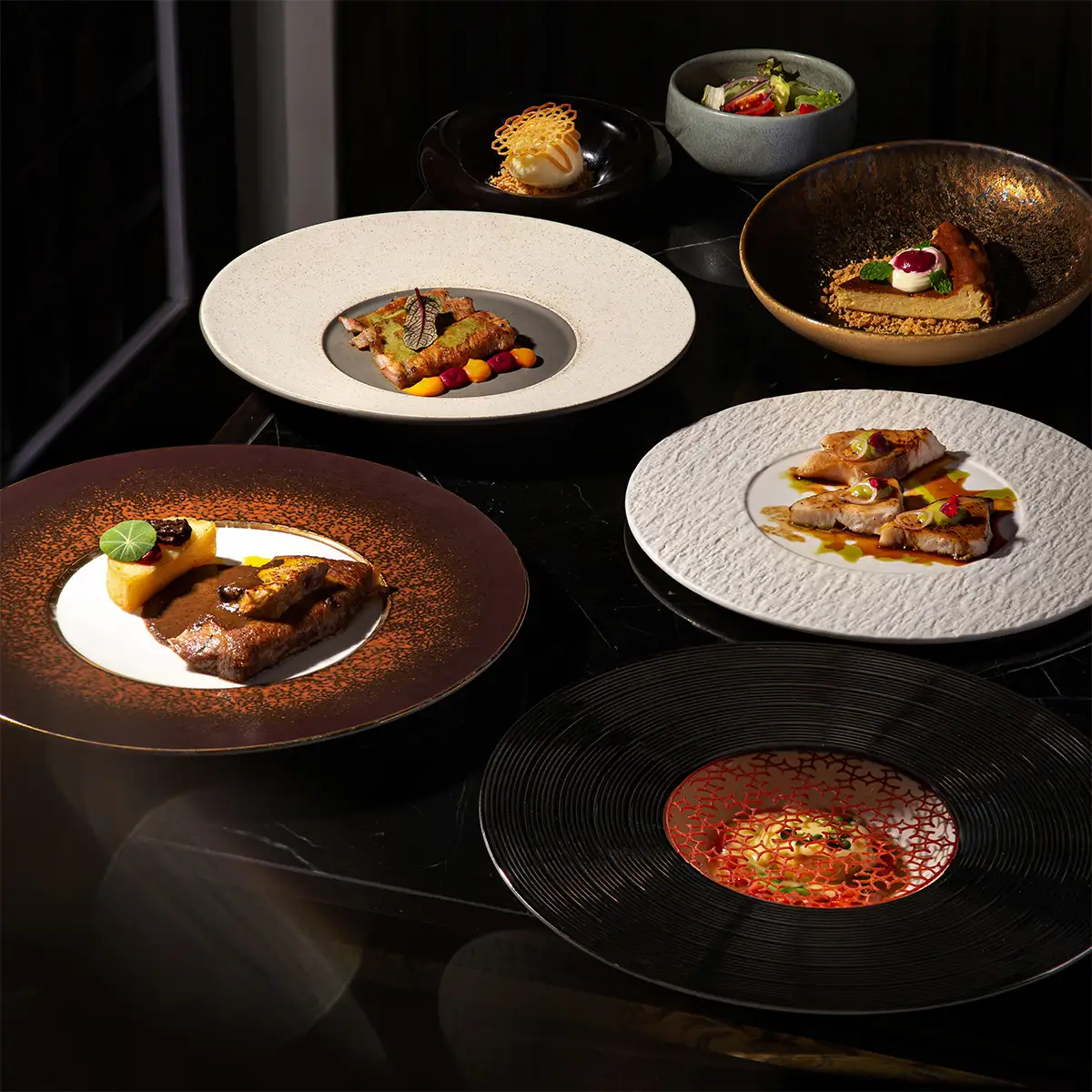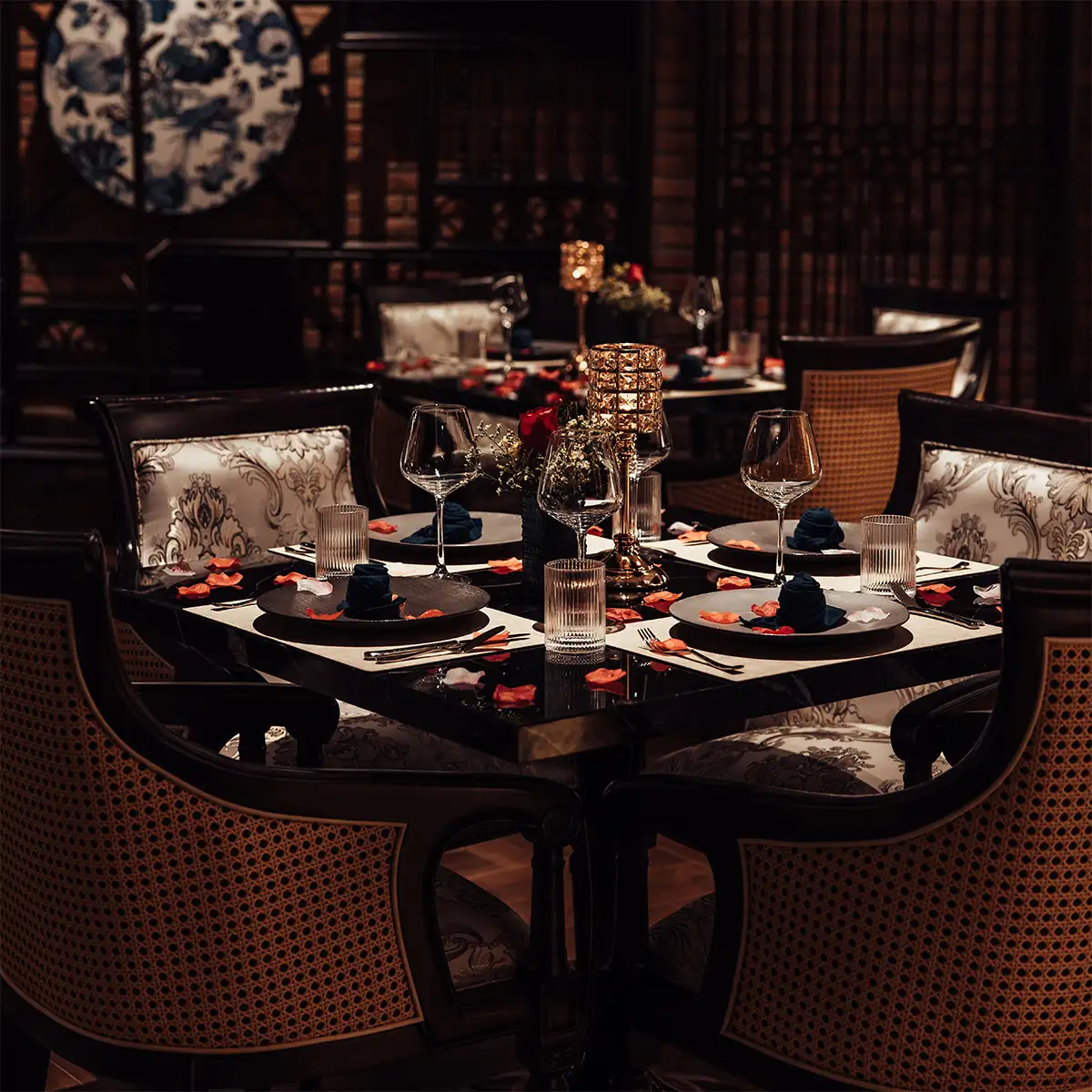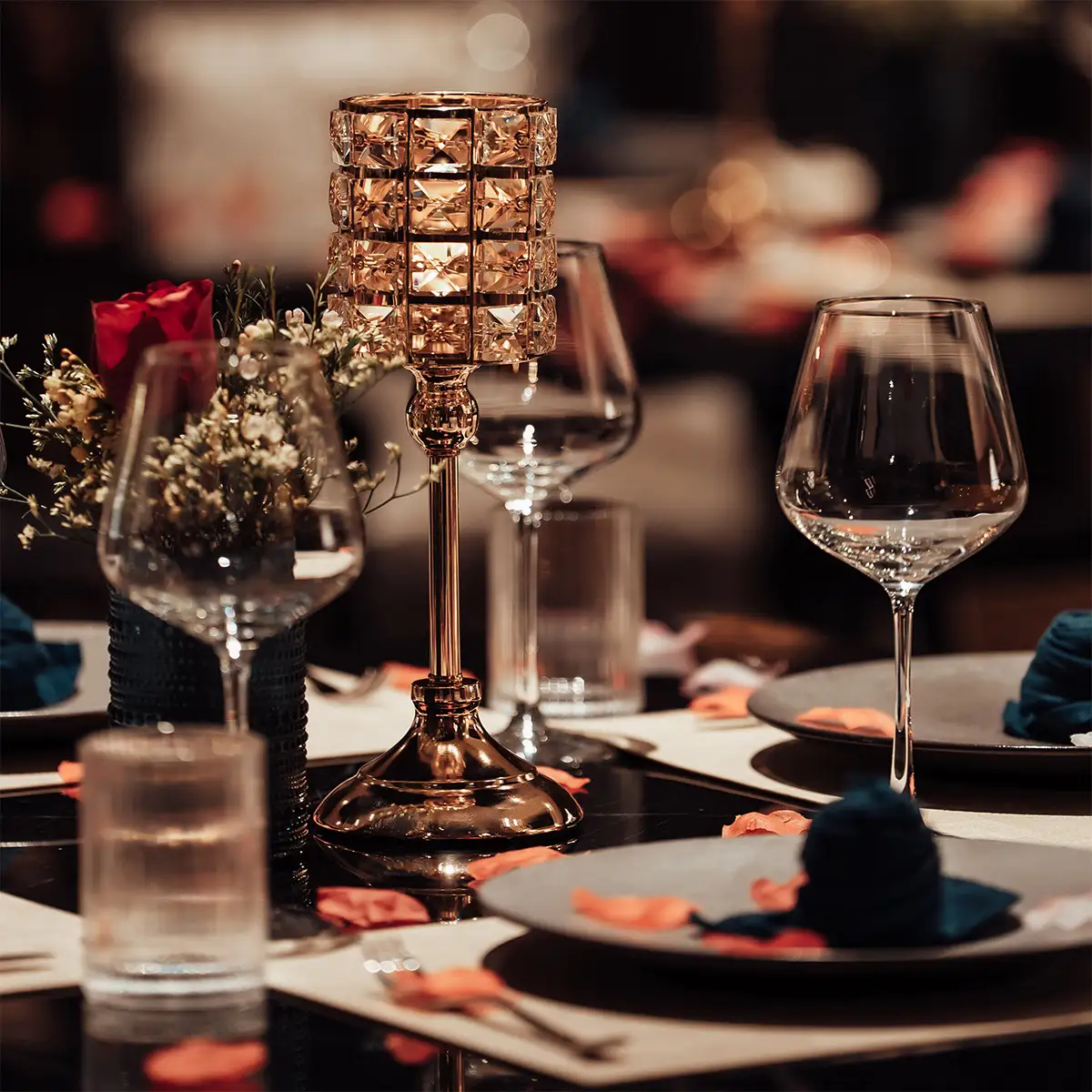- 1. The philosophy of fine dining cooking
- 2. Mastering fundamental techniques
- 2.1. Advanced knife skills and mise en place
- 2.2. Temperature control and cooking methods
- 2.3. The art of emulsification and reduction
- 3. Ingredient selection and preparation
- 4. The visual appeal: Plating and presentation
- 5. The fine dining chef's mindset
Beyond mere sustenance, fine dining is an art form—a symphony of flavors, textures, and visual appeal. It is a discipline where cooking transcends basic culinary skills, demanding absolute precision, boundless creativity, and a profound understanding of every single ingredient. At Moca Dining, we believe that the principles of elevated cuisine are a source of endless inspiration. This guide is intended to unveil the fundamental fine dining cooking tips and philosophies that define our craft, offering valuable insights for professional chefs and passionate home cooks alike.
1. The philosophy of fine dining cooking
Before one masters a single technique, one must adopt the philosophy that underpins all great cuisine.
- Precision as paramount: In a fine dining kitchen, there is no room for approximation. Every action is deliberate. This means meticulous measurements, exact cooking temperatures maintained with unwavering focus, and the discipline to ensure consistent execution for every plate that leaves the pass.
- Quality over quantity: The foundation of any extraordinary dish is an unwavering commitment to sourcing the finest, freshest, and often rarest ingredients available. The focus is on the inherent excellence of a single perfect component rather than an abundance of mediocrity.
- Balance over harmony in every bite: A fine dining dish is a cohesive whole. Every element on the plate, from the protein to the sauce to the smallest garnish, must have a purpose. The goal is to create a balanced and harmonious flavor profile where components complement and elevate one another, resulting in a taste that is greater than the sum of its parts.
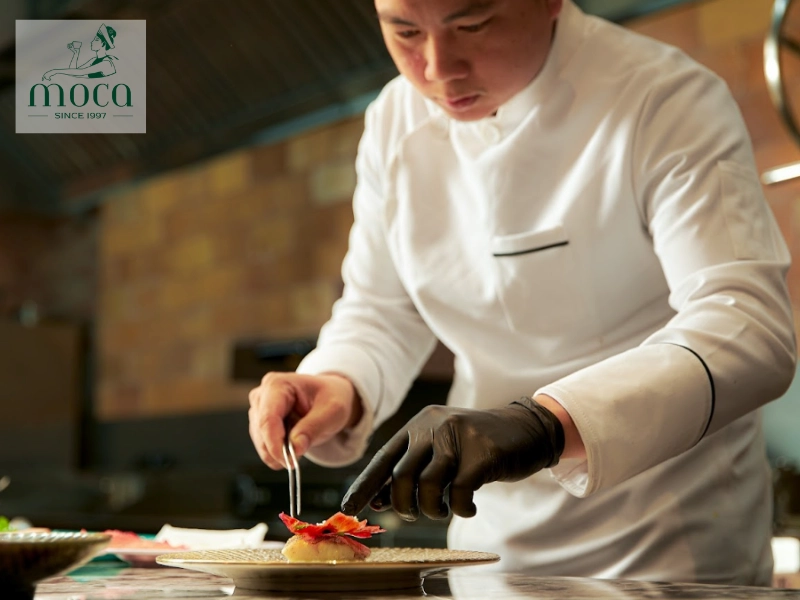
Refined in every detail, the pinnacle of culinary art.
Learn more: How to Enjoy Fine Dining Dishes: The Art of Culinary Appreciation
2. Mastering fundamental techniques
Philosophy is brought to life through technique. These are the non-negotiable skills that form the bedrock of gourmet cooking.
2.1. Advanced knife skills and mise en place
Precision begins with the knife. The importance of uniform cuts cannot be overstated, as they ensure not only an elegant presentation but also perfectly even cooking. A well-organized station, or mise en place, where all ingredients are prepared and all tools are at hand before cooking begins, is the signature of a professional.
Example Knife Cuts:
- Brunoise: A tiny, precise dice (about 3mm) used for garnishes or to incorporate delicate flavors into sauces and stuffings without overpowering the dish.
- Julienne: Long, thin matchstick-like strips, often used for vegetables in salads, stir-fries, or as a bed for a protein, ensuring a consistent texture and cooking time.
2.2. Temperature control and cooking methods
Mastering heat is mastering cooking itself. This involves using a range of methods to achieve specific results. Techniques like gentle poaching are used for delicate ingredients, while a precise, high-heat sear is essential for developing flavor and texture.
The Maillard Reaction. The delicious, brown crust on a perfectly seared steak or scallop is not magic; it is science. The Maillard reaction is a complex chemical process between amino acids and reducing sugars that occurs with the application of heat. It creates hundreds of new aroma and flavor compounds, resulting in a depth of savory flavor and a desirable crust that cannot be achieved through other methods. This is why precise temperature control during searing is critical for flavor development.
2.3. The art of emulsification and reduction
Sauces are the soul of many fine dining dishes. Mastering the art of creating stable emulsions (blending fat and water) and intense reductions is a hallmark of a skilled chef.
- Emulsions: A classic Hollandaise sauce is a perfect example of an emulsion, where egg yolk is used to bind melted butter and lemon juice into a creamy, stable sauce.
- Reductions: A demi-glace is the pinnacle of reduction, where stock is slowly simmered and reduced for hours, concentrating its flavor into a deeply rich, viscous sauce that can elevate any meat dish.
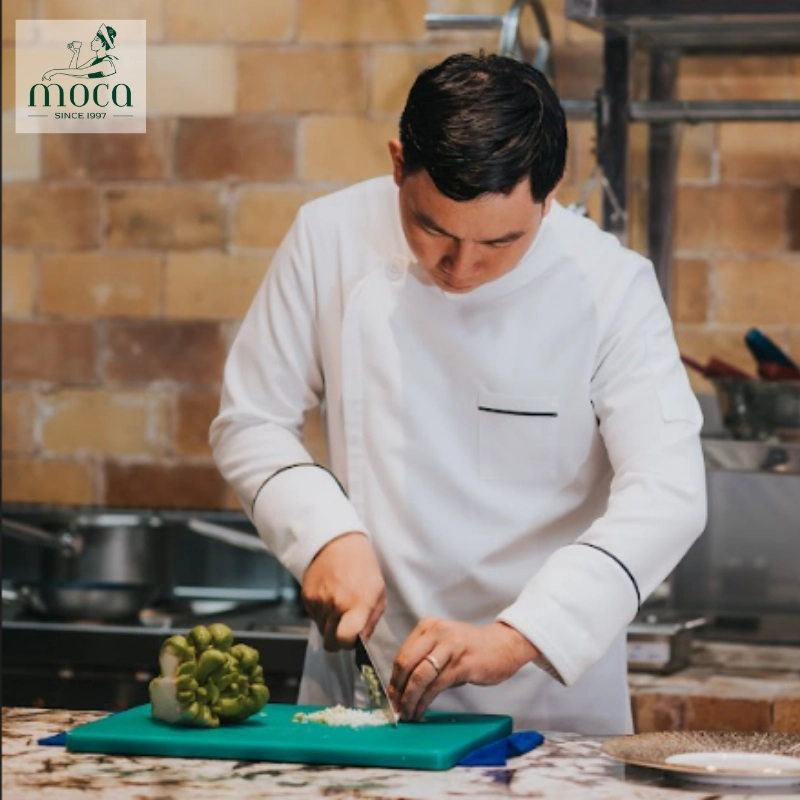
Technique leads, flavor ascends to greatness.
3. Ingredient selection and preparation
The quality of a dish is inextricably linked to the quality of its components.
- Sourcing premium ingredients: A deep understanding of seasonality is crucial. An ingredient at the peak of its season offers unparalleled flavor. A fine dining chef builds relationships with suppliers to source ingredients with a known origin, prioritizing fresh, local, and sustainable options whenever possible. This commitment to ethical sourcing is not only responsible but also results in a superior final product.
- Respecting the ingredient: Once sourced, an ingredient must be treated with respect. This means using techniques that highlight its natural flavors and textures, not mask them. It also involves a commitment to minimizing waste. For example, vegetable trimmings can be used for stocks, and bones can be roasted for sauces, ensuring that the entirety of a precious ingredient is utilized creatively.
- Flavor pairing and synergy: Creating memorable dishes involves exploring both classic and innovative flavor pairings. Understanding how acidity can cut through richness, how sweetness can balance bitterness, and how different textures can create a dynamic mouthfeel is essential for building complex and harmonious dishes.

Thoughtful selection, honoring original flavors.
Learn more:How to Plate Fine Dining Dishes: The Art and Techniques of Elegant Presentation
4. The visual appeal: Plating and presentation
We eat with our eyes first. Plating and presentation are the final steps in transforming a dish into a work of art
- Principles of fine dining plating: A well-composed plate considers balance, the strategic use of negative space to avoid clutter, the creation of height to add dimension, and the establishment of a clear focal point.
- Color, texture, and garnish: Contrasting colors and textures make a plate visually exciting. Garnishes should never be an afterthought; edible flowers, microgreens, or a drizzle of infused oil must add a complementary flavor or texture, not just decoration.
-
Plating Style Examples:
- Minimalist: This style uses a few key components and significant negative space to create a clean, elegant, and impactful presentation where each ingredient is highlighted.
- Deconstructed: A classic dish is broken down into its core components, which are then plated in an abstract, artistic way. A deconstructed Black Forest cake might feature chocolate soil, a cherry gel, and a quenelle of cream, separated on the plate.
- Architectural: This style uses height and structure, stacking ingredients to create a visually impressive, three-dimensional form.
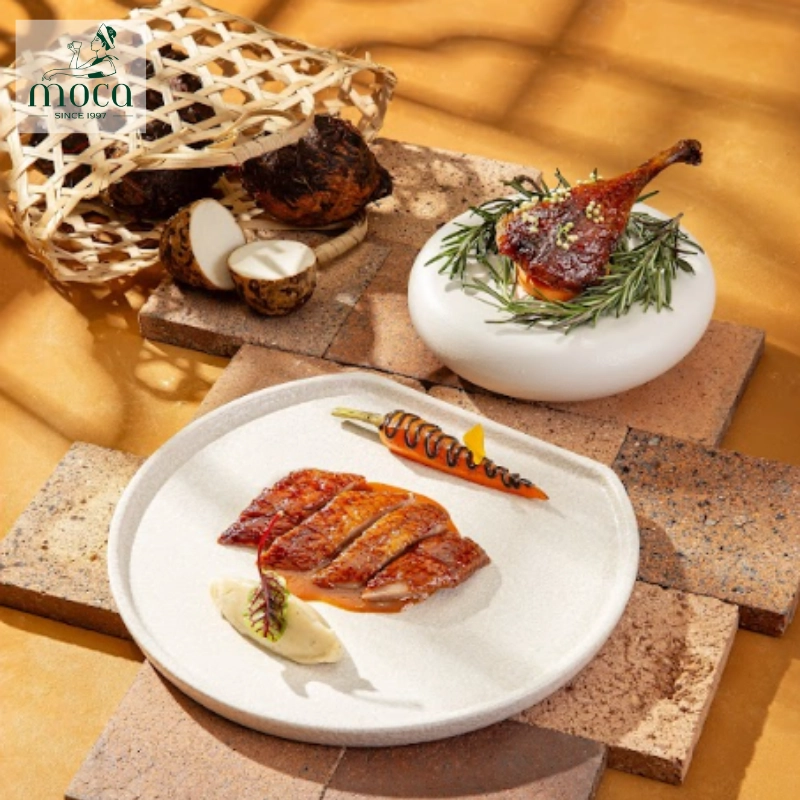
Artistry in every plating detail.
5. The fine dining chef's mindset
Beyond skill, a specific mindset is required to excel in the world of fine dining.
- Attention to detail: This is an obsession with the small things—the precise seasoning of a sauce, the exact placement of a single microgreen, the temperature of the plate itself.
- Continuous learning and innovation: The culinary world is always evolving. A great chef is a lifelong student, constantly staying abreast of new trends, experimenting with novel techniques, and pushing the boundaries of their own creativity.
- Discipline and consistency: The ultimate challenge is the ability to replicate perfection. A dish must be exactly the same on a quiet Tuesday as it is on a bustling Saturday night. This requires immense discipline and rigorous systems.
- Passion and dedication: This is the intangible element—the driving force behind the long hours, the intense pressure, and the relentless pursuit of excellence. It is the love for food and the desire to create unforgettable experiences for others.
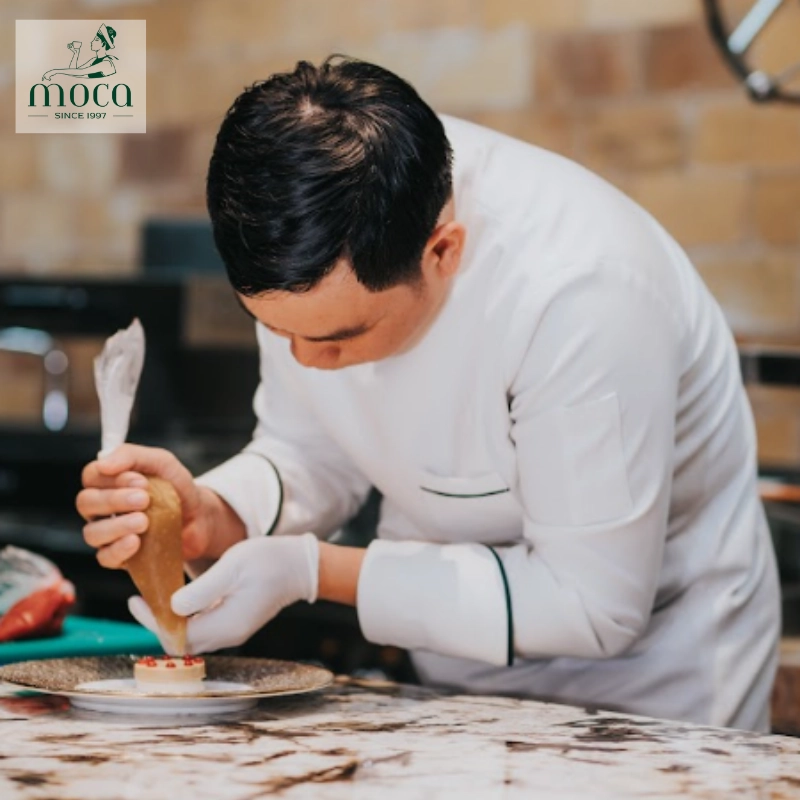
The spirit of perfection — passion and discipline.
Fine dining cooking is an art that blends technical skill, creativity, and attention to detail. By embracing the right mindset and mastering fine dining cooking tips, you can turn simple meals into unforgettable experiences. Moca Dining offers exclusive workshops and bespoke consulting to help you elevate your culinary skills. Ready to create your next masterpiece? Contact us today to make a reservation and unlock your full potential with Moca Dining.







